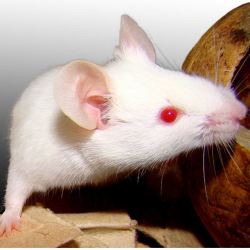Unfortunately, often news headlines and science just don't track. For example, a recent headline in The Telegraph proclaims: Household dust makes people fat. But did the research that article discusses really show what the headline says? Not hardly.
Among all the factors that have been labeled as causing obesity, perhaps the most innovative is supposed "endocrine disrupting chemicals or EDCs." And the recent report purporting to show that the level of such chemicals found in house dust can effectively cause fat cells to proliferate and store lipid might at first glance give some credence to that idea. However, not only were these effects not found in humans, they weren't even found in whole animals!
Drs Christopher D. Kassotis, Kate Hoffman, and Heather M. Stapleton from Duke University used cell cultures to test the hypothesis that chemicals found in house dust could affect adipose (fat) cells. They examined the possibility that first, such chemicals could cause pre-adipocytes to differentiate or mature into adult adipocytes. Second, they tested numerous chemicals to see if they caused the mature fat cells to accumulate lipid, i.e., get larger.
These investigators collected house dust from 11 homes, and then used various methods to extract several types of chemicals from these samples. Chemicals such as brominated fire retardants, phthalates, pesticides and organophosphate fire retardants were included in their tests, as were dust extracts containing a mixture of chemicals. They found that a number of these purported EDCs could increase the rate of conversion of pre-adipocytes to mature adipocytes, and could also stimulate the uptake of lipids into the fat cells.
But let's be real, the results of this study really say nothing about how such chemicals at the doses found in house dust would affect humans living in a dusty house. Obtaining such results in a cell culture system has no direct bearing on human physiology. Before one can really claim that they do, these results should be replicated first in cell culture, and then in animal models. And such animals should be exposed to the chemicals in the same way that a human might be — that is, in their environment. Only if those results support the hypothesis, should we even dream that they are applicable to the human condition.
And, of course, readers of this site know that we look askance (to put it mildly) at the whole concept that such environmental chemicals disrupt human endocrine systems any more than those found in many foods (think isoflavones in soy products) might do.
So until much more and better data are developed, we say that not only is the headline in The Telegraph misleading, it is patently false.

